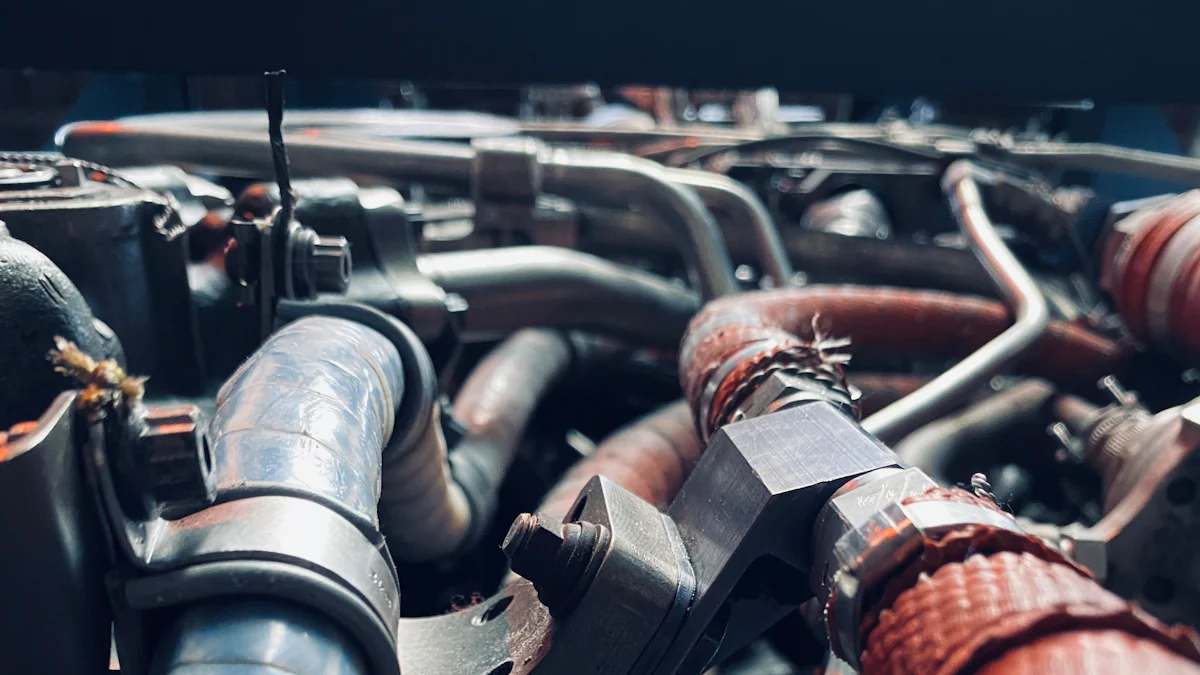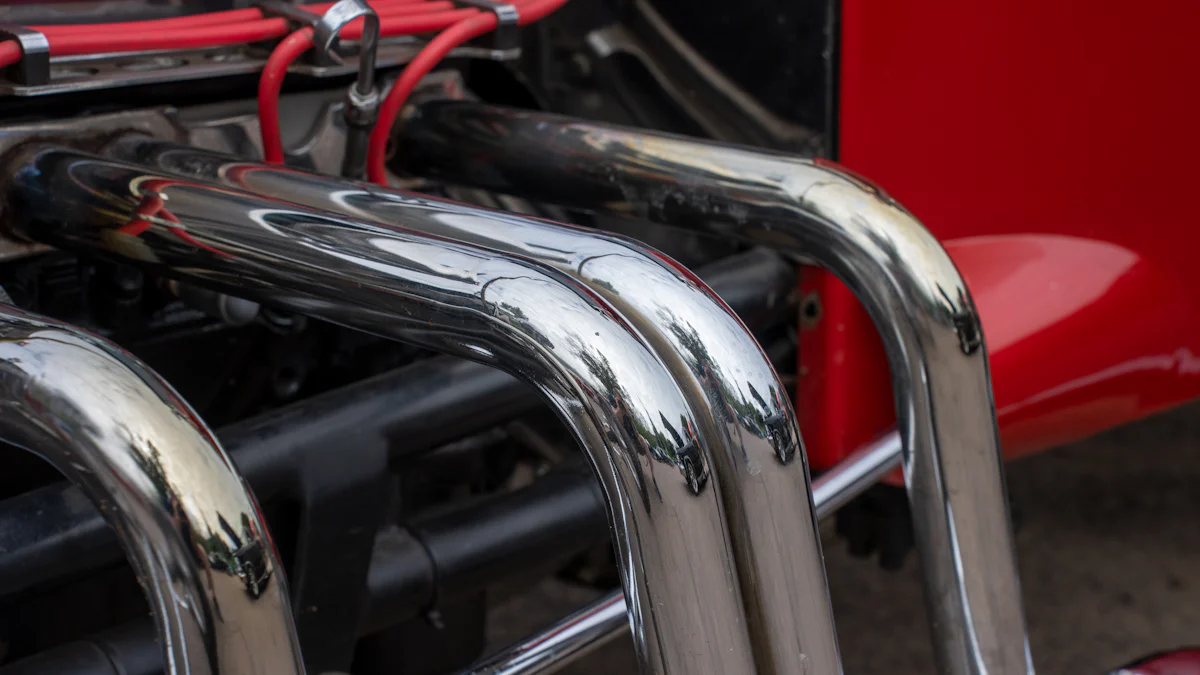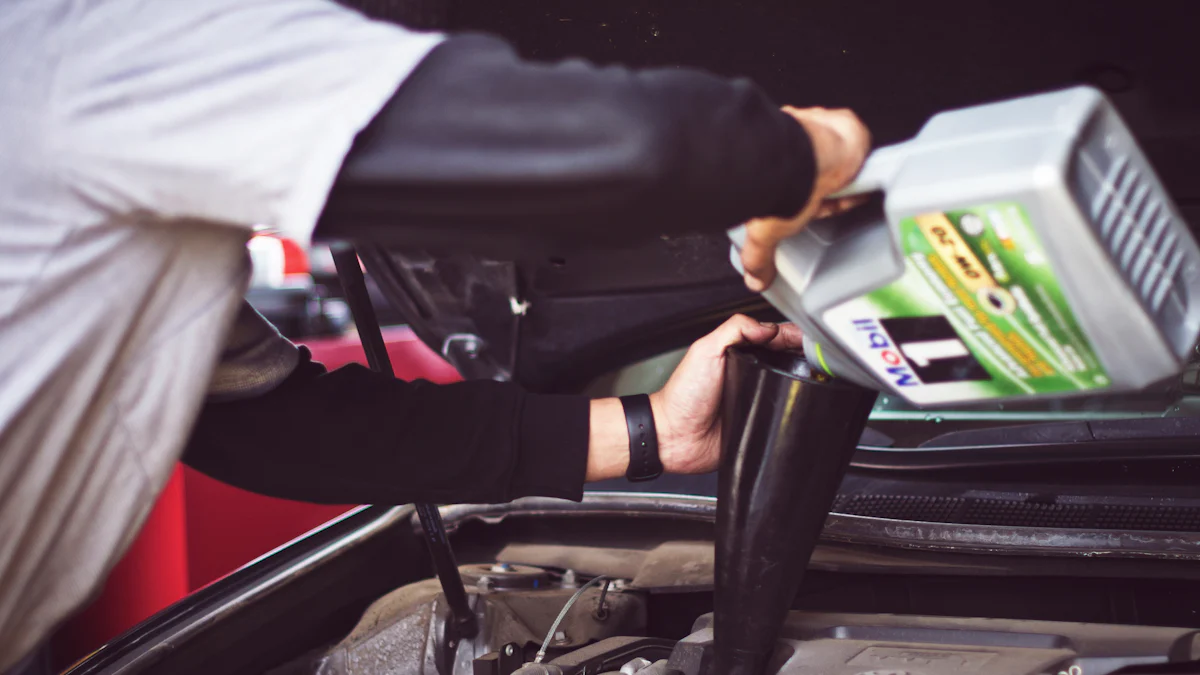
The Mercruiser 260 engine stands as a powerhouse in the marine world, known for its reliability and performance. At the heart of this robust engine lies the engine exhaust manifold, a vital component that ensures optimal operation. This guide delves into the intricacies of this crucial part, enlightening readers on its significance and maintenance. By exploring the nuances of the Mercruiser 260 exhaust manifold, enthusiasts will grasp essential insights to enhance their boating experience.
Understanding the Exhaust Manifold

The Engine Exhaust Manifold is a critical component responsible for collecting, channeling, and expelling exhaust gases from the engine. It plays a vital role in optimizing engine performance by reducing back pressure and ensuring the efficient operation of the overall exhaust system. This essential part moves exhaust gases from the engine’s exhaust ports to a central collector point, preventing potential damage by avoiding reversion where exhaust gases could flow back into the engine. By containing exhaust gases under pressure, it effectively forces them out through the exhaust pipe, creating suction that aids in removing remaining gases. The design of the manifold aims to accelerate exhaust flow at low RPMs without restricting it at high RPMs.
Components of the Exhaust Manifold
Manifold Itself
- The main body of the exhaust manifold is typically made of durable materials such as cast iron or stainless steel to withstand high temperatures and harsh conditions.
- Its primary function is to collect exhaust gases from multiple cylinders in the engine and direct them towards the exhaust system for expulsion.
Gaskets and Seals
- Gaskets and seals are crucial components that ensure a tight and secure connection between different parts of the manifold, preventing any leaks that could affect engine performance.
- Regular inspection and replacement of worn-out gaskets are essential to maintain optimal sealing efficiency.
Risers and Elbows
- Risers and elbows are additional sections attached to the exhaust manifold, helping redirect exhaust gases away from sensitive engine components.
- They play a significant role in minimizing heat exposure to surrounding parts, contributing to overall engine longevity.
Bolts and Fasteners
- Bolts and fasteners are used to securely attach the manifold, gaskets, risers, and elbows to the engine block.
- Proper torque specifications must be followed during installation to prevent leaks or damage due to loose connections.
Common Issues and Preventive Measures
Corrosion and Rust
When Corrosion and Rust plague your exhaust manifold, the consequences can be detrimental. The water environment in which marine engines operate accelerates the process, posing a threat to the integrity of the component.
Causes of Corrosion
- Exposure to hot exhaust gases triggers a chemical reaction leading to Corrosion.
- The formation of a gas-only chamber within the manifold fosters an environment conducive to Corrosion.
- Neglected maintenance allows for moisture accumulation, exacerbating the risk of Corrosion.
Preventive Measures
- Implement regular inspections to detect early signs of Corrosion.
- Apply protective coatings or treatments to shield the manifold from corrosive elements.
- Opt for high-quality stainless steel manifolds resistant to Corrosion.
Cracks and Leaks
The emergence of cracks and leaks in your exhaust manifold demands immediate attention to prevent further damage and maintain optimal engine performance.
Identifying Cracks
- Conduct thorough visual inspections for visible cracks or fissures on the surface.
- Utilize diagnostic tools like pressure tests to pinpoint hidden cracks compromising functionality.
- Monitor for symptoms such as unusual engine sounds or decreased performance, indicating potential cracks.
Repair and Replacement Tips
- Address minor cracks promptly with specialized sealants designed for high temperatures.
- Consider professional welding services for extensive crack repairs ensuring long-term durability.
- When replacement is necessary, opt for high-quality parts compatible with your engine model.
Blockages and Build-ups
Blockages and build-ups within the exhaust manifold can impede exhaust flow, leading to inefficiencies in engine operation.
Symptoms of Blockages
- Notice reduced engine power or acceleration, signaling potential blockages hindering performance.
- Detect irregular exhaust patterns or smoke emissions indicative of blockages within the system.
Cleaning and Maintenance Tips
- Regularly clean the manifold using appropriate solvents or degreasers to remove accumulated debris.
- Inspect internal passages for obstructions, ensuring smooth airflow through the system.
- Schedule routine maintenance sessions focusing on clearing out any build-ups affecting performance.
Inspection and Maintenance Tips

Regular Inspection Routine
Marine mechanics emphasize the significance of regular inspections to ensure the exhaust manifold functions optimally. The process involves a meticulous examination of the manifold for any signs of wear or damage that could compromise its efficiency. This routine check-up allows for early detection of potential issues, preventing costly repairs down the line.
Using Diagnostic Tools
In-depth knowledge of marine electrical, hydraulic, and mechanical systems equips professionals to utilize diagnostic tools effectively. By employing advanced equipment, such as pressure tests and thermal imaging devices, mechanics can pinpoint underlying problems within the exhaust manifold. These tools provide valuable insights into the condition of the manifold, enabling precise maintenance interventions to uphold peak performance.
Maintenance Best Practices
Maintaining exhaust manifolds and risers is a critical aspect of boat engine upkeep that demands attention to detail. Marine mechanics stress the importance of adhering to maintenance best practices to prolong the lifespan of these essential components. By following industry-recommended guidelines, boat owners can ensure smooth sailing experiences without encountering unexpected breakdowns.
Cleaning the Manifold
Skillful handling during cleaning procedures is essential to preserve the integrity of manifolds and risers. Utilizing appropriate solvents and degreasers, mechanics meticulously remove accumulated debris from these components. Thorough cleaning not only enhances engine efficiency but also prevents blockages that could impede exhaust flow, safeguarding overall performance.
Replacing Worn Parts
When wear and tear become evident on exhaust manifolds, prompt action is necessary to maintain operational excellence. Experienced marine mechanics recommend replacing worn parts with precision-engineered alternatives compatible with specific engine models. This proactive approach ensures seamless functionality and minimizes the risk of unexpected malfunctions during boating excursions.
Seasonal Maintenance
As seasons change, so do maintenance requirements for boat engines equipped with exhaust manifolds. Winterizing these components involves protective measures against cold weather conditions that could impact their performance. Conversely, preparing for boating season entails thorough inspections and tune-ups to guarantee optimal functioning when hitting the water.
Recapping the essential insights shared, regular maintenance of the exhaust manifold is paramount for optimal engine performance. Testimonials from satisfied boat owners highlight the transformative impact of proactive upkeep. Embrace this guide to safeguard your marine engine’s longevity and efficiency. Your feedback and questions are welcomed as we navigate towards seamless boating experiences together.
Post time: Jun-25-2024



